Understanding Stabilization
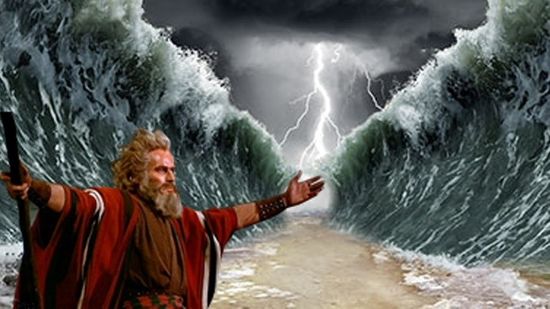
Boats are a series of compromises, and so are onboard stabilization systems. While today’s stabilizing technologies are better than ever and fit on a wider range of boats, there are still some downsides. However, there are some effective ways to reduce the roll of almost any boat and enjoy long days on the water. Learn more here.
If you venture farther, anchor often or want to take your seasickness-prone friends and family with you, you might want to consider the benefits of a steady boat. There are three major categories of modern stabilization technology: gyroscopes, fins, and paravanes. They all have their own strengths and weaknesses and are readily available for a variety of newly built boats and retrofits. So, let’s discuss these popular means of stabilization.
Gyros
Gyroscopes have been used for motion control on vessels since the beginning of the 1900s, and they work on the principle of the conservation of angular momentum with a spinning flywheel precession; that is keeping its rotating axis perpendicular to the torque which is being exerted on it. That means, it takes considerable force to displace a spinning wheel and a gyro spinning at very high rpms wants to stay upright. It will compensate for the motion of the boat, thereby keeping it upright as well.
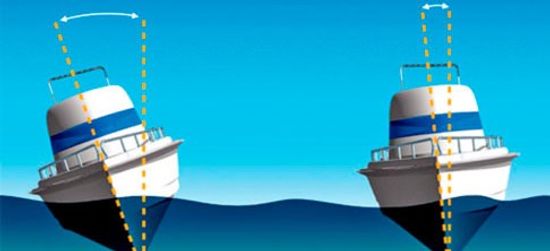
Gyros can be open-air or closed in a vacuum and the bearings are cooled by either water or air. Active gyros come in various sizes for use in a wide range of boats and have active control mechanisms that monitor bearing and motor temperatures, vacuum pressure, gimbal angles, and more. It’s best to mount them low in the hull aft of midship, and although it’s ideal to install them on the centerline, it’s not necessary, which is why larger boats can use two or more. They come in some form of enclosure and a cradle, say of cast aluminum. Because they tend to hum when operating, they come with some type of vibration reduction element.
The Players in The Field
Seakeeper gyros utilize a flywheel spinning in a vacuum at 8,000 - 10,000 rpm, which generates a powerful righting force. The vacuum means there’s less friction resulting in less energy to maintain the rotational speed and less heat to dissipate. That’s why Maryland-based gyro manufacturer, Seakeeper, has enjoyed significant growth since the introduction of its first product in 2008. The company’s small gyros fit in a three-feet cube, weigh less than 1,100 pounds (498.95 kg), and operate in a vacuum so air friction is virtually eliminated, and they need less power. Some of these gyros require a genset of only 3kW for the 45-minute spool-up time and after that, only 1-2kW to run.
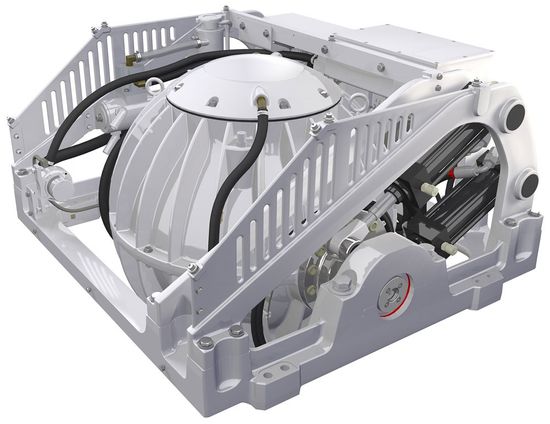
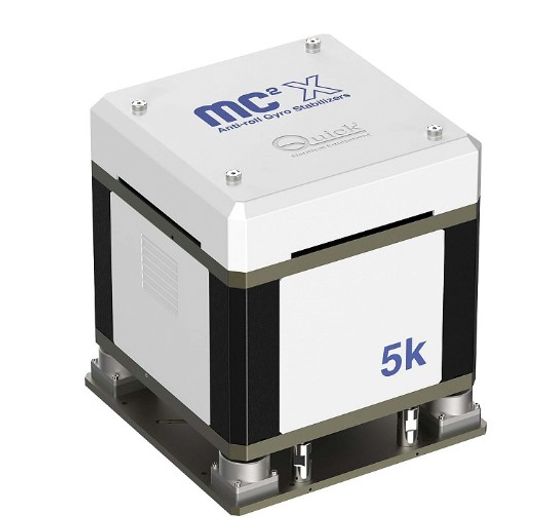
McKinna Yachts works with Sea Gyro, a non-vacuum-based design from an Australian company whose manufacturing facilities are based in Malaysia. McKinna President, Garret Martin, knows that offering both fin and gyro technology is smart because the best choice depends on both the owner and the specific vessel, but he realizes the appeal of the new gyros. “Sea Gyro has given us an affordable option and our owners love them,” he says.
Another player in the gyro market is Mitsubishi Heavy Industries , which has been producing their Anti-Roll-Gyro (ARG) for some time but has had an exclusive arrangement with Ferretti Group and therefore has not affected much of the rest of the market. Their design is not in a vacuum and therefore draws more power to operate.
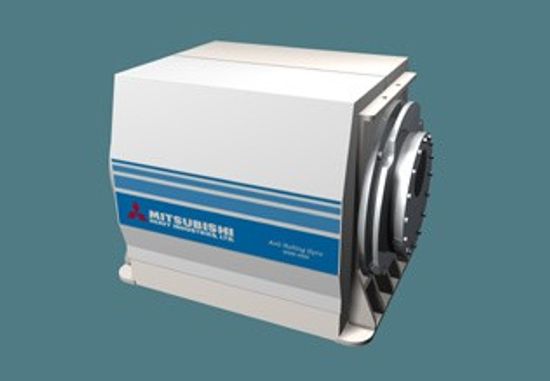
The Cons
Gyros have their own issues because they add substantial weight and need to be mounted on sturdy, reinforced structural parts of the hull. They’ve gotten much smaller, and Seakeeper has a leaning-post that its smallest gyro stabilizer, the Seakeeper 3, designed for boats ranging from 30 to 40 feet (9.14 to 12.19 m) isn’t easy. This model can work with a few additional batteries, so there’s no genset required (though larger models do require generators, which means more fuel consumption, and in some cases, an additional fuel system). New builds accommodate gyros much more easily than a retrofit, which may require repositioning existing machinery, hull stringer reinforcement, and more.
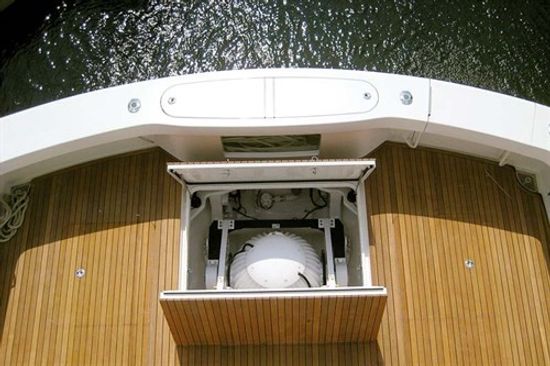
Gyros also hum, which can set up a vibration inside the boat. Seakeeper has designed a new sound damping system and says the gyro produces a continuous and non-disruptive sound of about 70 dB that is tolerable enough to mount under a bunk. Finally, gyros can’t compete with fins in case of heeling or listing from a constant force like wind or loading issues.
The Pros
The good news is that gyros require little maintenance other than checking the vacuum and container annually. Some don’t need any new through-hulls to be cut because even the water-cooled designs can tee off another raw-water intake. However, most have their own intakes and sea strainers that will need to be checked. They rest entirely within the hull so there is nothing to protrude and they don’t add wetted surface that creates drag. Gyros are also getting smaller to accommodate a wider range of vessels. Most importantly, regardless of how well fins work at speed, gyros work well at rest even if you do have to run the genset all night.
Gyros also make for great party conversation. If your guests doubt the effect of your gyro, just turn it off and watch the dishes go flying. Their effectiveness is why several yacht manufacturers are now installing Seakeeper gyros as standard equipment (yes, standard) on new lines of powerboats.
Fins
Active fin stabilizers are wings that protrude downward and outward from the hull. They alter their angle based on the rate of roll and oppose the wave force that produces a rolling motion. To work efficiently, they must have water flowing over their surface and at rest, they act more like paddles than wings. “Active” refers to the control mechanism that makes them move.
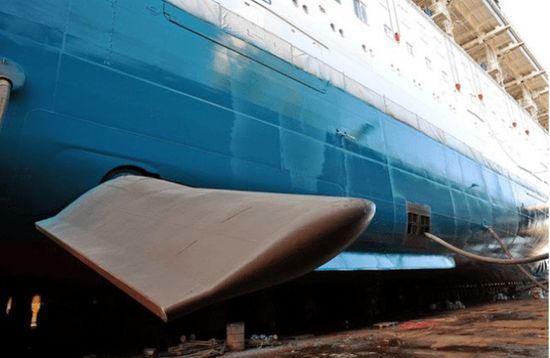
The Cons
The key challenge with fins is to design them to minimize drag at high speed but maximize lifting area at rest. There are many influencing factors on the size of fins including boat length, tonnage, and shape, and even the destined cruising area. Long Atlantic swells will exert different forces than the short roll period of the Caribbean.
Today, most stabilization-systems manufacturers use solid-state digital inertial sensors to control the alignment of the active fins. The new sensors are faster than the old analog ones that used to make fins 40% effective.
Each manufacturer of fin stabilizers has a twist on how they solve the fins’ inherent shortcomings. Arcturus Marine, makers of TRAC stabilizers, adds a winglet at the end of the fin to minimize inefficient wrap-around or “wing-tip vortex” which is the turbulence at the end of the foil. The winglet increases lift and reduces drag.
Because boats with higher speeds require smaller fins, but vessels at anchor conditions require larger fins, Quantum’s XT line has a small outer footprint with a retractable section that extends when at anchor to increase the surface area and generate more lifting force at zero speed. “Ours is a unique approach that changes the geometry of the fins,” says Mark Armstrong of Quantum. “We have a fin that adjusts to what you need it to do.”
Side-Power stabilizers lock hydraulically in multiple center positions to improve performance. Side-Power says its fins reduce roll and yaw and assist the autopilot so efficiently that the boat actually saves fuel.
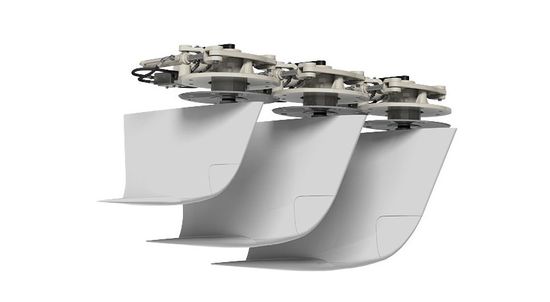
Of course, there are tradeoffs to fins as well. Fins produce drag and, since they are appendages protruding from the hull, can be damaged by underwater obstacles. They have an effect on fuel consumption, require maintenance, and can snag seaweed and cables. There are hydraulic pumps, hoses and moving parts that must be installed and cared for, and holes must be cut in the hull to install fins. Finally, despite the new actuator speeds, fins are not tremendously effective at rest or on small faster-rolling boats, and if you do use them at anchor, once again, you have to run your genset all night.
The Pros
On the other hand, fins can be installed on new boats or retrofitted to older boats because they don’t take up much room inside the vessel. The installation is generally cheaper and faster than adding a gyro, they run off the engines underway, they are relatively quiet, and they fit a large range of boat sizes. Some are designed to break away in case of impact, thereby protecting the hull and they work from the second you turn them on without any spool-up time.
Paravanes
Paravanes use rigging that extends out the sides of the superstructure of the boat well above the waterline. Cables will be lowered into the water that support the devices that will create the stabilizing effect.
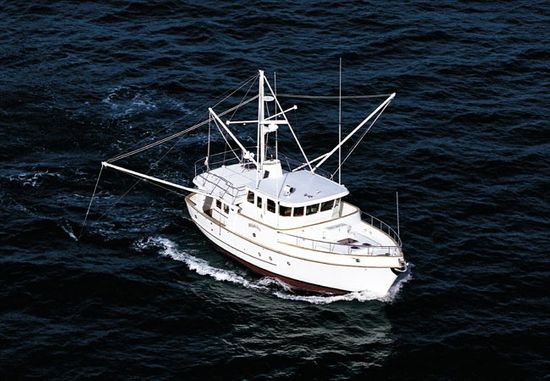
The Cons
The problem with these devices is limited to one significant factor; they create drag. When the paravanes are lowered into the water, they are pulled along and there is a detrimental effect on the boat’s performance. They require extensive rigging on the boat itself and are relatively awkward to use. For this reason alone, we almost always see them exclusively on commercial fishing vessels. These are the type of vessels that have less money to spend and care little about looks. They also have dedicated crew that knows how to operate them.
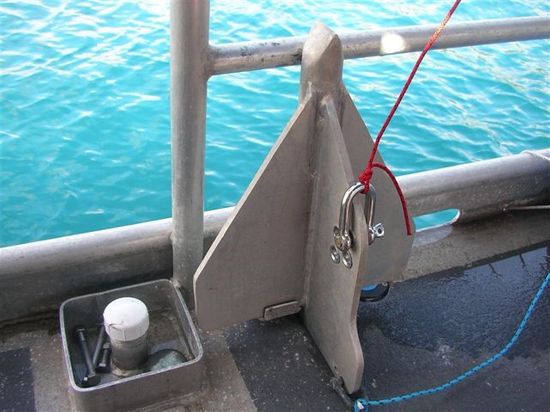
The Pros
There are no mechanical components to these devices, so equipment failure is all but eliminated. The fins can be changed out from the type used underway to another type that is used when at rest. The type that is used underway remains flat while being pulled through the water and add resistance to any force that tries to bring them up such as the rolling of the boat. The type of fins used at rest pitch down when being lowered while remaining flat as the roll tries to pull them up.
Price for These Systems
Underway, fin stabilizers run off engines, which may require an upgrade to the appropriate horsepower to manage the foils and bigger engines are more expensive and use more fuel. At anchor, large fins may require a 15- to 30-kW genset. A gyro requires a much smaller source of power and has no effect on engine size.
Seakeeper’s M8000 gyro is $80,000 to $90,000 where fins for a similar boat may be 60% to 70% of that cost. Additionally, installation of a gyro is easier on a new boat, but the costs rise exponentially when an existing boat has to be cut up to make room.
You must consider the whole cost of a stabilization system before rushing toward a solution and that includes the cost of operation, upkeep, upgrades as well as the ancillary systems themselves.
Effectiveness
How much will today’s systems smooth the seas? That depends on sea state, wind force, the technology you choose and the shape of your hull. The standard of measurement is 3 feet (1 m) seas on the beam where both fins and gyros tout an 80% to 90% resonant roll reduction. Think what that means for you standing on the flybridge – if you can take the inclination from 14 degrees to 3, you might want to fish longer or cruise farther.
Can’t make up your mind which way to go with the technology? That will depend on whether it’s a new boat or a retrofit, the layout of the mechanical spaces, the usual cruising speed and the size of the vessel. Large yachts sometimes go with both fins and gyros due to the inherent benefits of each. The two technologies can work in concert for the best of both worlds.
Decisions…Decisions…
So, do you really need to slow your roll? That depends on when, how and with whom you boat. If you never leave the bay, don’t anchor in roll places or don’t mind getting a continuous abdominal work out as you constantly correct for the motion, you’ll be fine without stabilization systems and there’s no need to spend the money. But remember that a steadier boat is a safer boat where crew and cargo stay put. The boat works less so things break less. Anglers can fish longer, and divers can board safely. When people are less fatigued at the end of the day, they sleep better at night, and a rested crew makes better decisions, not to mention is more pleasant to be around and that alone, may be worth the price of admission.